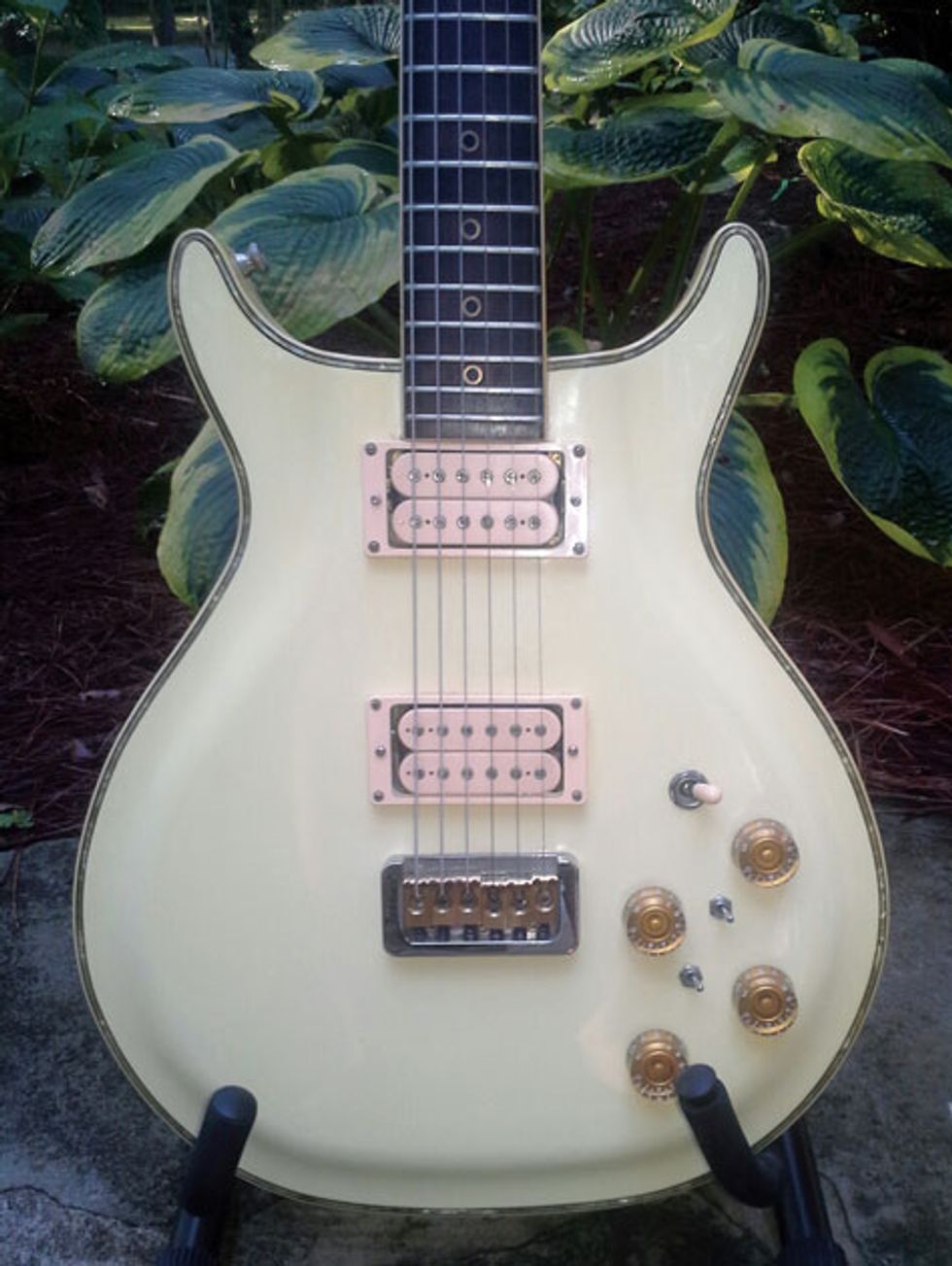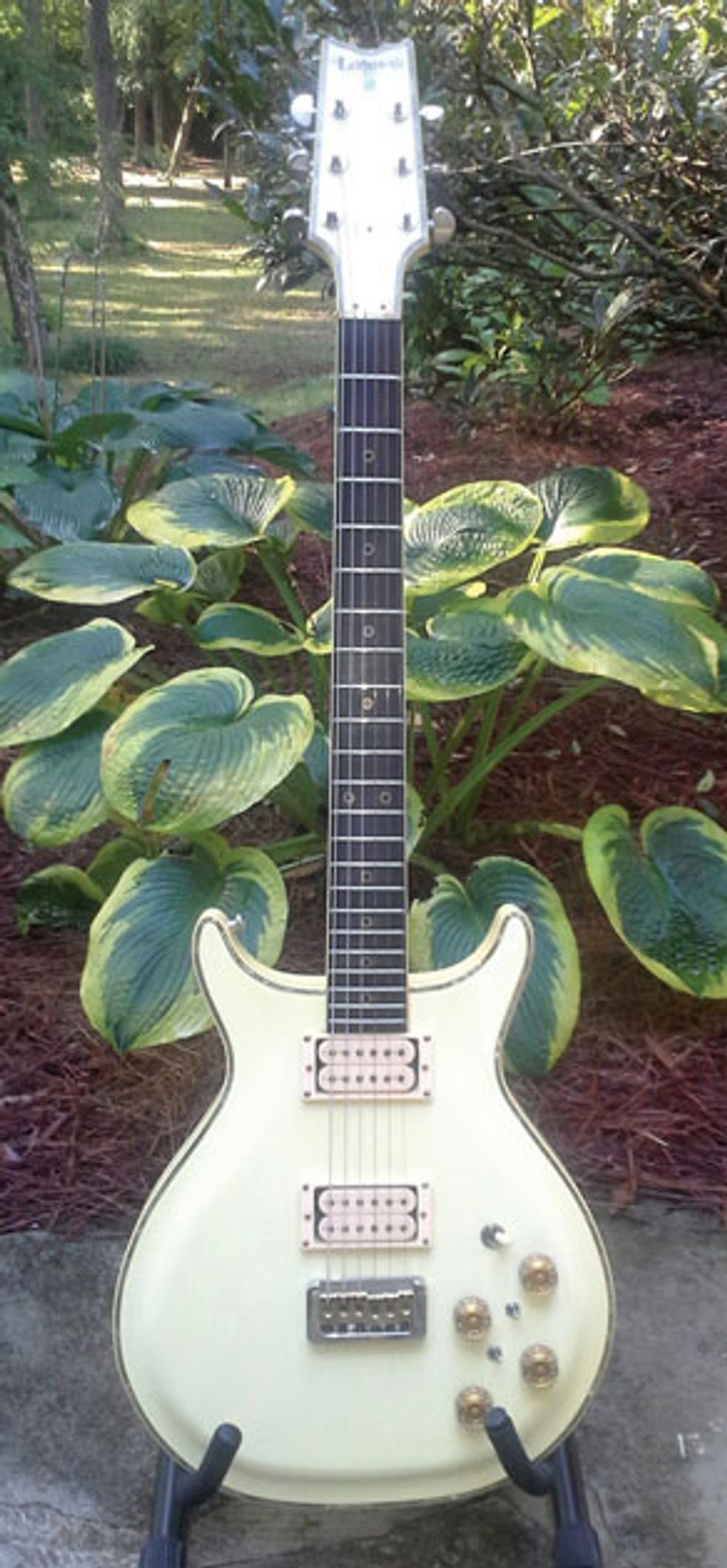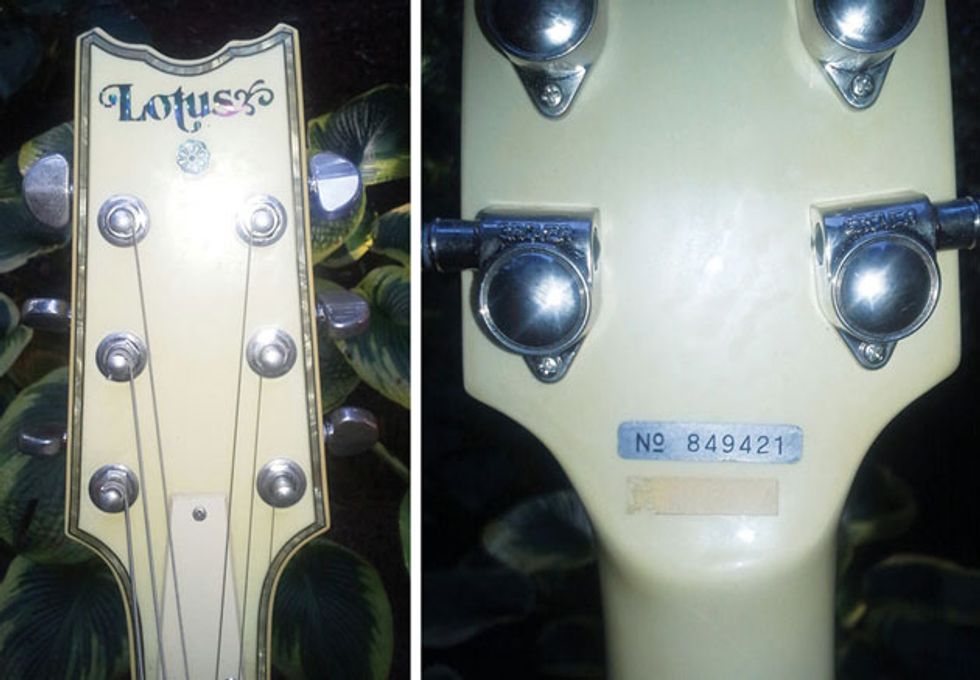This late 1970s/early 1980s ivory-finished Lotus may be a treasure.
These Lotus models featured neck-through-body construction and a host of eye-catching appointments.
Hi Zach,
What can you tell me about my late 1970s/early 1980s Lotus guitar? It has a set neck, pearl binding, a brass nut, and brass fret inlays. It seems similar to the Wing series guitars that Washburn was selling at that time. It is very well built and plays like a dream. I think it’s pretty cool and I get lots of comments about it.
Thanks,
Chris in Roswell, GA
Hey Chris,
Cool guitar! You really don’t see many of these anymore. You are correct that it’s similar to the Washburn Wing series, specifically the Washburn Eagle from the late ’70s and early ’80s. In fact, aside from different fretboard inlays and brand names on the headstocks, when you compare the two they’re nearly identical. If this connection seems odd, the occurrence of very similar guitars with different brand names is more common that many of us would think.
This circa late 1970s/early 1980s Lotus bears a striking similarity to the Washburn Eagle
from the same era, and for good reason.
Midco International, a former musical distributor, sold the Lotus brand as an exclusive trademark of guitars during the 1970s and 1980s. Like many other distributors, Midco commissioned a manufacturer in Asia to build guitars under a unique brand name. However, many of these factories in Asia received requests to build guitars for multiple manufacturers/distributors, meaning the same guitar could essentially end up under multiple trademarks. This isn’t much different from what Harmony, Kay, and other house-brand jobbers from the Chicago area were doing in the 1940s through the 1960s.
The standard practice for many distributors was to offer a line of guitars based on popular American designs like Les Pauls and Strats, for example, along with a few original designs. And all were offered at a bargain price or were at least inexpensive enough to compete with the American manufacturers. While the majority of imported Asian-built copies from the era aren’t considered to be of very good quality, the Lotus brand was an exception, mainly because of the factories they were built in.
That said, information regarding Asian-guitar production from the 1970s and early 1980s is cloudy at best. Most lower-end Lotus-branded guitars were produced by either Samick or other factories in Korea or Indonesia. However, some of the higher-end Lotus instruments were built by the Cort factory in Korea or by one of three factories in Japan: Yamaki, Matsumoku, and Moridaira.
From my research, your guitar was built at the Moridaira factory and is based on the Morris VX-45R. (Morris was a house brand of Moridaira.) And the VX-45R is also the same as, alas, the Washburn Eagle. Further proof is the silver serial-number sticker on the back of the headstock that appears to be unique to Morris models of that era.
Specs for your guitar include an ash body and carved maple top (rosewood was an option) bound with an abalone border, and a 5-piece maple/rosewood through-body neck. Other features include the bound 22-fret ebony fretboard with brass circle inlays, a matched-finish headstock with abalone border, 3-per-side tuners, two exposed humbuckers, and controls for each pickup. Its ivory finish is probably the most desirable color for this model, but the guitar was also available in a natural finish that highlighted the maple or rosewood carved top.
Your Lotus “Eagle copy” appears to be in excellent condition and I estimate the current value to be between $400 and $600. Since the Washburn Eagle was produced circa 1979 to 1984, it’s more than likely your Lotus was made during this time period as well.
A guitar’s factory of origin plays a huge part in its quality and assessed value, so don’t just write off an unfamiliar brand of vintage guitar when you come across one. The silver serial-number sticker (right) on the back of the headstock tells us the Moridaira factory in Japan probably built this Lotus.
Lotus guitars still continued to appear through the 1990s, and Midco International eventually became part of Musicorp in the early 2000s. Around that time, they discontinued all Lotus guitars and began using the trademark on a line of bluegrass instruments.
There’s still a lot of confusion over Japanese- and Korean-built guitars from this era in regards to trademarks, who built them, when they were offered, and the connection between them all. However, many of these guitars are high quality and you should always pay close attention when encountering an unknown trademark. If a guitar was produced at one of the aforementioned factories, it could very well be a treasure, just like your Lotus.



